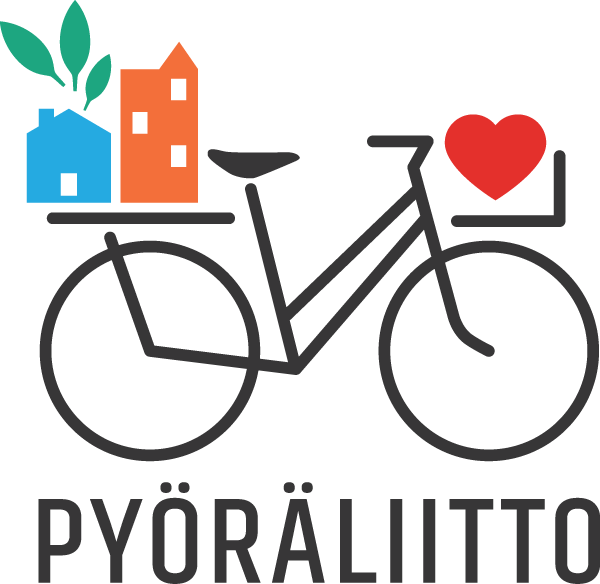In this guest posting, Olajumoke Beyioku discusses the potential and limiting factors of professional usage of cargo bikes in Finland // Tavarapyörien ammattilaiskäyttöä tutkinut Olajumoke Beyioku käsittelee tässä englanninkielisessä blogikirjoituksessa tavarapyörien käytön mahdollisuuksia ja haasteita Suomessa
It is sustainable and low-maintenance, with a carriage capacity up to 250kg and for some heavier models; up to 500kg capacity. Easily manoeuvred across narrow congested city streets, it’s an optimal solution for maximising limited spatial resource such as parking spaces for delivery vehicles. When brought up in discussions on sustainable logistics, most heads in the room nod in agreement at the advantages of this sustainable mode of last-mile delivery. Yet, there are still so few of them in use for parcel delivery in Finland. What really are the limiting factors slowing down increased usage of cargo bicycles for parcel logistics?
A study conducted by the Pyöräliitto ry (Finnish Cyclists federation) from April to September of 2023, provides interesting insights. Experts in Finland were interviewed from amongst public and private sector stakeholders with varying profiles across logistics management, city planning, mobility services and policy making. Results cut across both macro and micro- levels, as well as regime and niche levels from the perspective of sociotechnical transitions in mobility.
This article briefly discusses a few of the key results of the study as follows:
- A lack of awareness of the utility and benefits of cargo bikes
- The prevailing perception of parcel logistics as automobile-based
- Lack of financial incentives
- Infrastructural limitations in terms of the inadequate path widths suitable for cargo bikes, and winter maintenance
- Cost constraints: inadequate funding for bicycle planning in cities
Majority of the experts cited a distinct lack of awareness of the utility and economic benefits of the cargo bike technology amongst users, stakeholders and decision-makers. Past mobility studies have established critical links between awareness, perceptions and mobility culture. According to the textual data from the study, general perceptions on parcel logistics are still largely automobile-based. Still on awareness, the research also revealed that at least 50% of past pilot projects were executed with no specific budget allocation designated for awareness campaigns, PR and advertisement. This is a major gap, and a critical consideration in thinking our way out of the path dependence of the automobile dominance which has been fuelled by decades of relentless advertisements, consequently having significant systemic results.
Business-specific limitations for the logistics companies were revealed as centred around operational concerns such as a lack of micro-distribution hubs, and the requisite fleet size of cargo bicycles required to fulfil large parcel volumes.
Textual data reveals a distinct scepticism on the feasibility of replacing inner city delivery vans with cargo bicycles in Finland, driven by insufficient data. Past city-funded trials in Finland report an insufficiency of conclusive data. The trials were small and had single points, with no replication across multiple locations to make for more robust, conclusive findings and subsequent interest in continuity.
The study revealed that delivery companies in Finland are still focused on maintaining the automobile status-quo for parcel delivery, deferring to sustainability pressure by replacing fossil-based parcel delivery vans with electric models.
A lack of financial incentives for cargo bicycles was repeatedly highlighted in the textual data. Infrastructural constraints were highlighted as well, from multiple perspectives. In other cities besides Helsinki, this was attributed to insufficient funding towards bicycle planning and an insufficient number of cycling planners in some cities.
In conclusion, the results point to three initial areas of focus recommended to accelerate adoption of cargo bikes, in Finland, also replicable in other countries. Firstly, awareness is a key starting point. Well-mapped out and funded awareness campaigns both physical and digital are recommended, targeted at promoting the awareness of cargo bikes and diverse utility of cycling for both general users and businesses. Using the success of the Helsinki city bike projects as reference, Cargo bikes are also recommended to be included in Finland’s city bike fleet as means of driving user adoption.
Secondly, financial incentives are a necessity. Europe’s large courier express and parcel (CEP) ecosystem makes for high levels of competition within the sector. This naturally translates to slim profit margins and the imperative for logistic companies to keep business costs low, via a vis profitability. For Finland, the introduction of financial incentives is recommended. Specifically in favour of truly sustainable modes such as cargo bikes, to serve as nudges to encourage increased adoption by logistics businesses. There are projected economic gains, as the global markets for cargo bikes is projected to see significant accelerated growth over the next decade.
Thirdly, some regulations and compliance issues may need to be revisited within the city centres. Finland for example, is relatively lax on parking of delivery vans which are sometimes seen on the sidewalks or cycling lanes. Winter maintenance on cycling paths must also be prioritised. Arguments regarding low temperatures have proven to be largely insufficient by past studies, further indicted by Oulu’s globally-recognized success in this area.
There is yet much work to be done, if we are to achieve benchmarked sustainability goals. The full study report can be found here.

Olajumoke Beyioku
Olajumoke Ajike Beyioku is a transport and sustainable mobility professional with a dual master’s degree, via the EIT Urban Mobility master School. She has keen interests in sustainable transport choices, with focus on solutions and research which aid urban planning and policy towards less congested cities.
